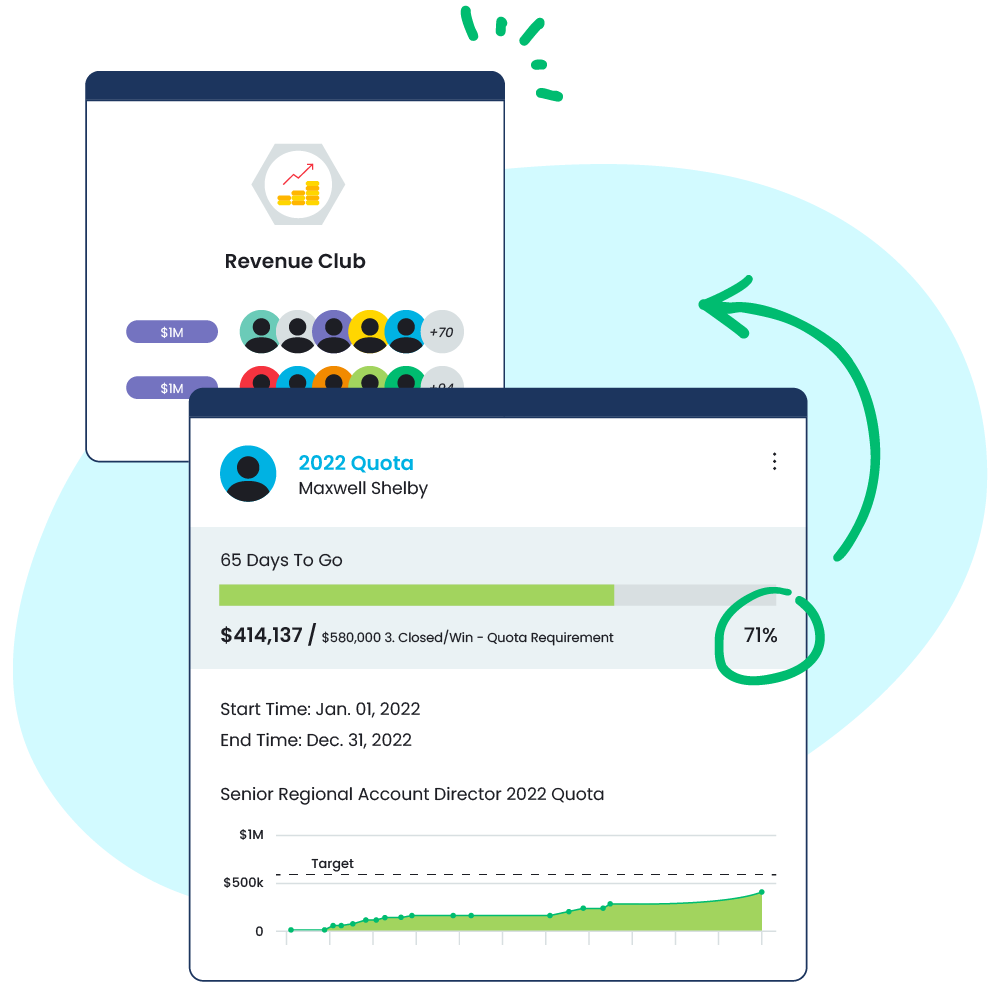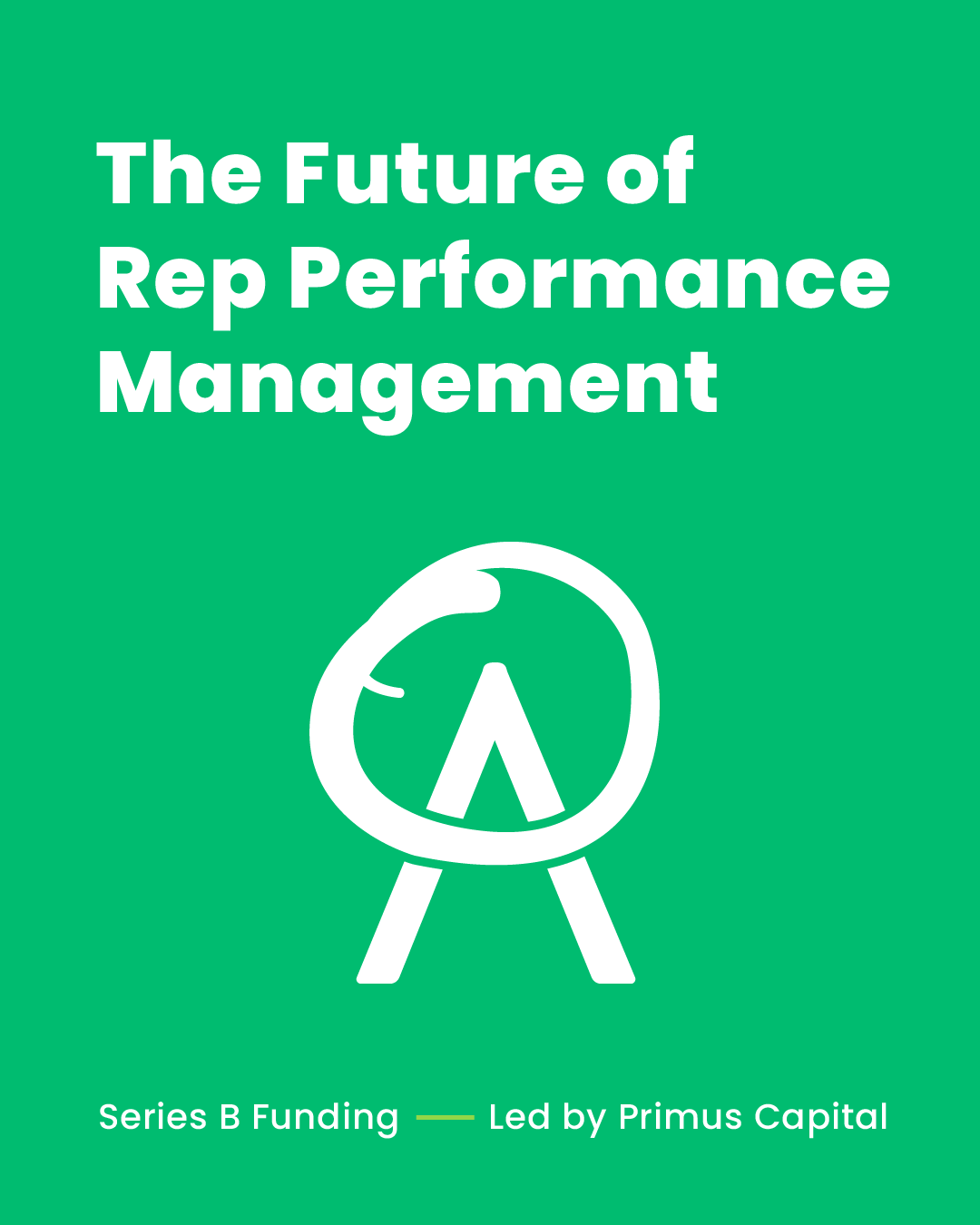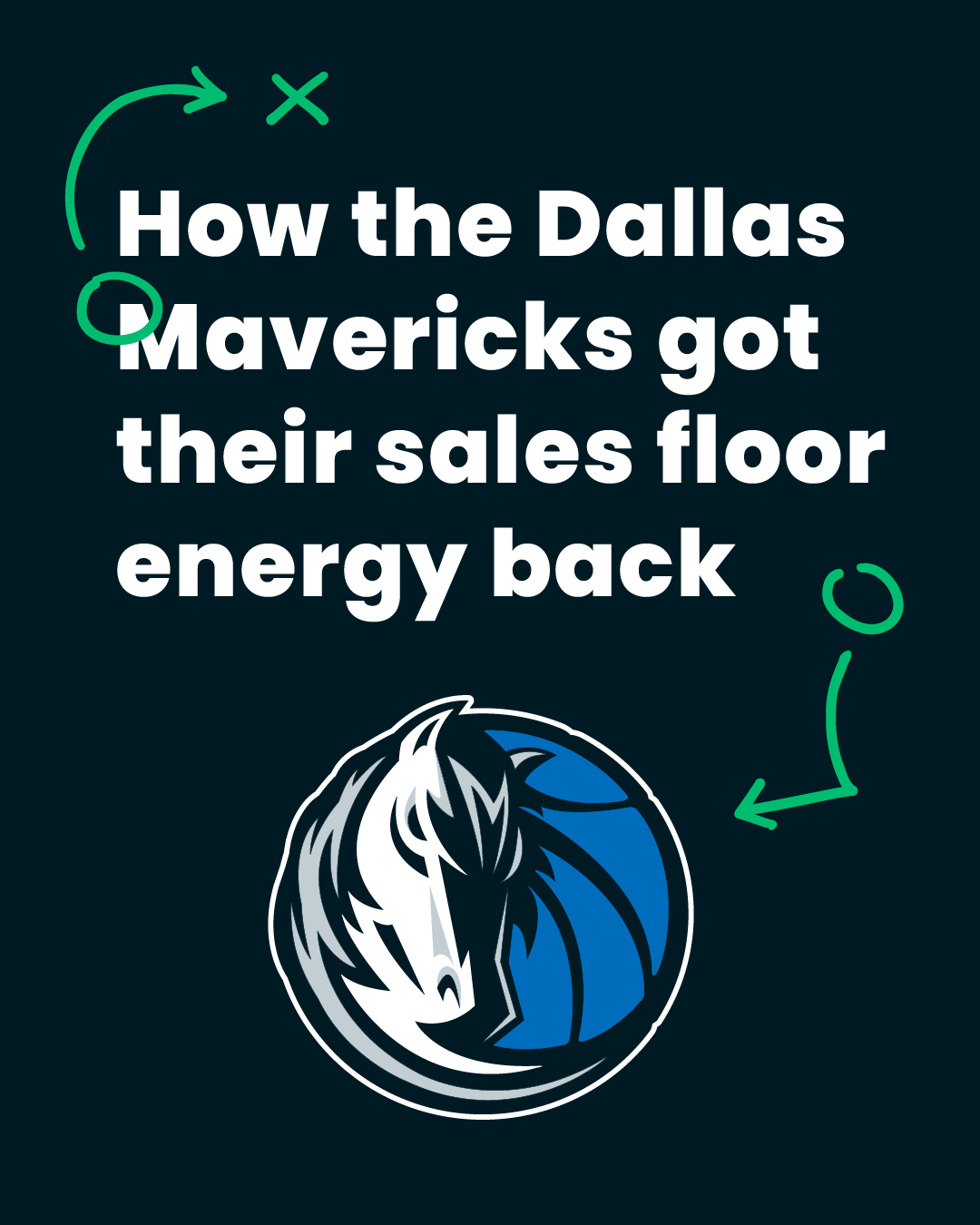Sales Performance Metrics
Sales Performance Metrics
In order to build a world-class sales organization, you need to ask two essential questions: What does good sales performance look like, and how can you achieve it? The answers lie in defining sales performance metrics—the data points that indicate individual or team performance. Measuring sales effectiveness and monitoring performance empowers everyone on your team. When your reps know which metrics they need to work toward, they’re motivated to take ownership and increase productivity. Measuring sales performance metrics also empowers sales leaders with the information they need to course correct, strategize, and help their team achieve their goals and objectives.
Sales performance metrics, sometimes called key performance indicators (KPIs), help you measure performance against goals and objectives. If your team’s productivity and performance aren’t delivering your desired result, you know something needs to change. Measuring sales performance metrics helps you get to the root of the problem, revealing exactly where and how you need to pivot in order to move the needle.
What types of sales performance metrics should you measure? Different sales teams will benefit from measuring different metrics, but most of those metrics fall within one of the following three categories:
- Activity Metrics
Activity metrics are what your reps do on a daily, weekly, or monthly basis. Tracking dials, emails, connects, demos, and other metrics help you zero in on where your reps’ individual strengths and weaknesses lie so you can coach more effectively. Activity metrics are considered leading indicators—predictive and proactive metrics you can use to inform future strategies.
- Objective Metrics
Objective metrics rely on rep performance and customer behavior. Examples include customer retention percentage, deal win rate, and number of new customers acquired. These are considered lagging indicators. While you can’t change their outcome, you can use objective metrics to identify problem areas and develop a game plan to impact future performance.
- Efficiency Metrics
Efficiency metrics assess how the quality and quantity of your work compare to the outcome. What resources did you spend in order to achieve a certain goal, and was that time and money worth the outcome? These help you determine how efficiently your reps are working.
As a sales leader, you need an objective way to identify and measure success. That’s why sales performance metrics are so important when it comes to building a healthy and sustainable sales organization. Ambition’s accountability toolset was designed specifically to help you define the metrics that matter, track team and individual progress-to-goal, and hold your reps accountable every step of the way. Using performance metrics and data to measure success has been proven to increase sales-activity by 25%.
Sales Performance Metrics Examples
There are a variety of sales performance metrics examples, but it’s important to track the metrics that will help your revenue organization achieve its specific goals. What industry does your sales team support? What are your quarterly and annual objectives? Does your team work remotely or in person?
Here are some of the most common examples of sales metrics.
- Total Revenue
Total revenue is influenced by every aspect of your business, which makes it one of the most important metrics to track. While you can measure the total revenue within any given time frame, sales teams typically track annual recurring revenue (ARR) and monthly recurring revenue (MRR).
- Average Revenue Per Customer
It’s important to know exactly where your revenue comes from. Does one account or customer contribute a significant amount of revenue? Tracking this metric tells you where to focus your time and resources.
- Net Promoter Score (NPS)
A happy customer can be your company’s biggest advocate. Your NPS score indicates whether your customers would recommend you to others, which reveals your team’s ability to manage customer relationships.
- Quota Attainment
The rate at which your team hits quota says a lot about your processes. If a team consistently fails to hit quota, you may need to reevaluate your onboarding, training, and/or coaching methods.
According to Erin Tomlinson, VP of Commercial Sales and Operations at Ambition, activity metrics like calls, emails, connects, demos, and proposals are obviously critical. But the other sales performance metrics she deems essential include:
- Close Rate (or Win Rate)
This metric compares the amount of deals won with the total number of opportunities, which directly reflects the effectiveness of your sales team.
- Average Deal Size
How much revenue are reps driving per sale? This number helps you forecast the activities you need to complete in order to hit (or exceed) your goal.
- New Pipeline Created
The amount of new pipeline created indicates how well your team is prospecting. This metric is linked to activity metrics. More dials, for example, will result in more pipeline opportunities.
While many sales teams track the same metrics, the significance of those metrics likely varies by team. For example, inside sales performance metrics may overlap with those of outside sales teams, but outside sales teams likely focus more on meetings set. Ambition scorecards give you the ability to weight metrics by importance, so your people know exactly what to prioritize.
An Executive Analysis
How Sales Coaching Impacts Key Business Metrics

How to Measure Sales Performance
Wondering how to measure sales performance while maximizing your time? You need clean data to effectively track sales performance ratios and metrics—but you have better things to do than manually input data or run reports. A sales dashboard can optimize visibility for sales leaders and their reps, so everyone can see their performance at any given time. With a real-time line of sight into activity and objective metrics, managers not only have more time to focus on value-add activities like planning, strategizing, and more consistent coaching. They also have the data they need to make each of those activities more impactful and effective. According to the Total Economic Impact™ of Ambition, a commissioned study by Forrester Consulting, sales managers save 7 hours per week with customized dashboards and automated reporting.
A sales dashboard can do more than track metrics. It helps build a culture of accountability and turns performance data into actionable insights. When your people have visibility into everyone’s metrics, a few things happen. They can celebrate individual and team wins in real time. They’ll feel more motivated to move the mark, as their own metrics are on display. Additionally, your sales team will be fueled by a spirit of camaraderie and friendly competition.
When you’ve implemented a good system or software for measuring sales performance metrics, you can really begin to assess what that data reflects and what success could look like for your team. This is where the concept of Moneyball sales metrics comes into play. When you look at daily individual performance, you have a deeper understanding of what is or isn’t working, and why. This knowledge enables you to coach more effectively and create an action plan to propel your team forward.
How can you do this? One of the sales performance ratios you can assess is how real-time performance affects daily, weekly, monthly, or quarterly objectives. What are the correlations between real-time activities and hitting objectives successfully? With the right sales tracking software, you’ll be able to analyze this easily. Start by identifying your top and bottom performers on a specific objective. Compare their numbers and assess what activities set your top performer apart. Use this data to empower the rest of your team with a clear and attainable picture of success.
Sales Metrics Template
You can’t be an effective manager if you don’t know which metrics to measure. Setting and tracking the metrics that matter most for your team is essential to helping your people achieve success. When they have a clear action plan, they become more motivated to take ownership in their role. If you’re not sure where to begin or how to best track performance, it can be useful to see how successful sales teams do it. This is where a sales metrics template can come in handy.
With a sales metrics template, you don’t have to start from scratch. Ambition’s free scorecard templates show you how world-class sales teams set, track, and measure KPIs. All you have to do is download and customize it for your team’s specific goals. Scorecards are both practical and effective when it comes to tracking sales performance metrics.
Scorecards can be used for teams and individuals alike. With the ability to break down quotas into daily, weekly, and monthly activities, your people are empowered with a game plan for success. Plus, you get visibility into their progress-to-goal. This real-time line of sight helps you see who’s on track, who needs coaching, and allows you to hold everyone accountable.
Ambition scorecard templates include built-in features such as a KPI calculator. This helps you determine what your reps must do on a daily basis to hit goals. Depending on your team, some of those activities carry more weight than others. Scorecards allow you to assign a point value to each activity based on priority. For example, if calls hold more value than emails, you can assign them a higher point value.
Sales rep scorecards and other sales metrics templates help lay the groundwork for your reps, but they also give sales managers the metrics they need to improve processes, coach more effectively, and ultimately improve productivity and performance. Ambition rep performance management software turns data into actionable insights so sales managers and reps know exactly how to move forward efficiently and effectively.



